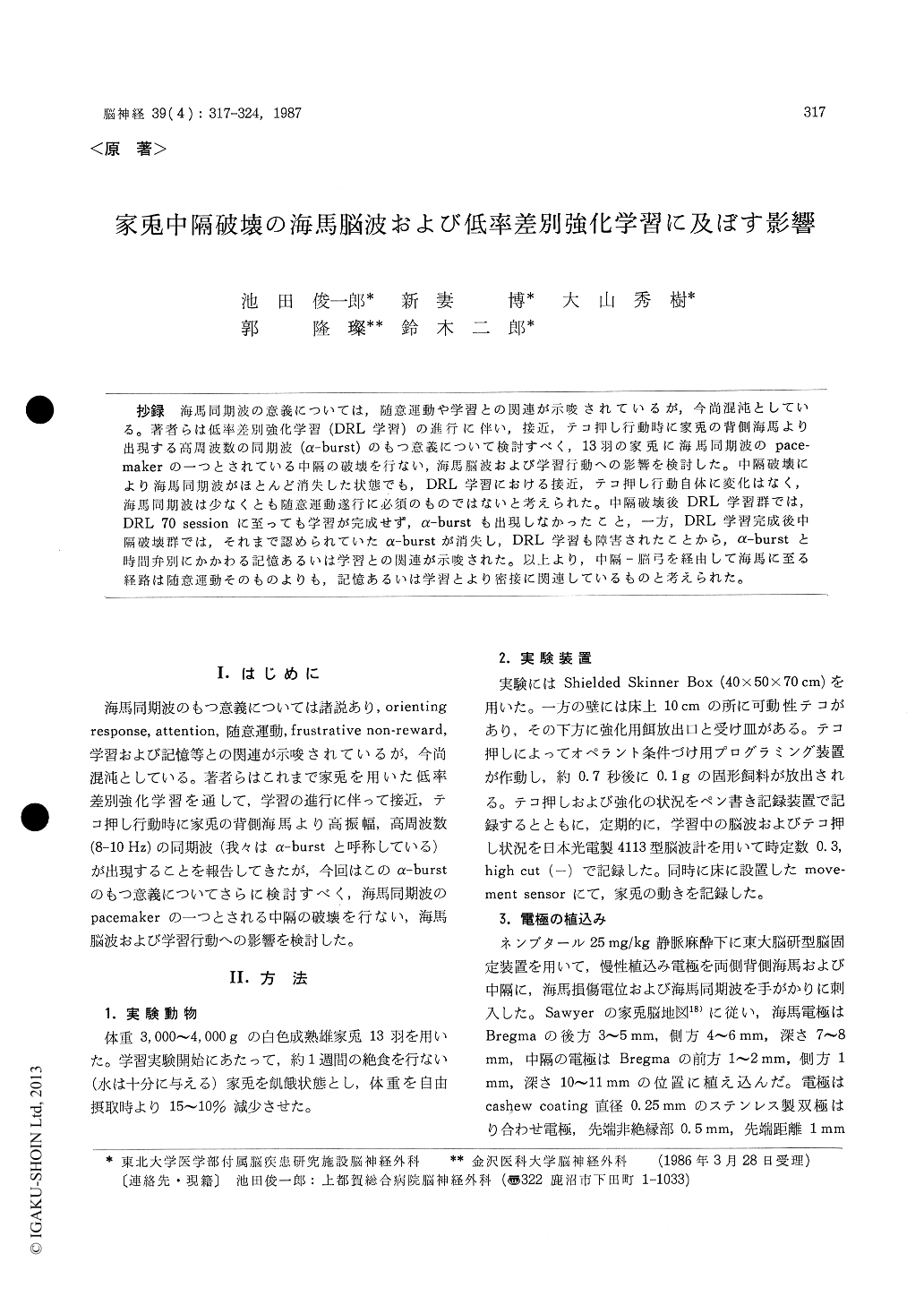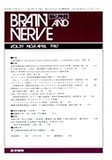Japanese
English
- 有料閲覧
- Abstract 文献概要
- 1ページ目 Look Inside
抄録 海馬同期波の意義については,随意運動や学習との関連が示唆されているが,今尚混沌としている。著者らは低率差別強化学習(DRL学習)の進行に伴い,接近,テコ押し行動時に家兎の背側海馬より出現する高周波数の同期波(α-burst)のもつ意義について検討すべく,13羽の家兎に海馬同期波のpace-makerの一つとされている中隔の破壊を行ない,海馬脳波および学習行動への影響を検討した。中隔破壊により海馬同期波がほとんど消失した状態でも,DRL学習における接近,テコ押し行動自体に変化はなく,海馬同期波は少なくとも随意運動遂行に必須のものではないと考えられた。中隔破壊後DRL学習群では,DRL 70 sessionに至っても学習が完成せず,α-burstも出現しなかったこと,一方,DRL学習完成後中隔破壊群では,それまで認められていたα-burstが消失し,DRL学習も障害されたことから,α-burstと時間弁別にかかわる記憶あるいは学習との関連が示唆された。以上より,中隔—脳弓を経由して海馬に至る経路は随意運動そのものよりも,記憶あるいは学習とより密接に関連しているものと考えられた。
We had reported that hippocampal high frequent activity at 8-10 Hz (α-burst) appeared during ap-proach and lever press with the progress of DRL learning.
In this study, effect of bilateral septal lesions on hippocampal EEG (especially on α-burst) and behavior during 10 second DRL learning was investigated in thirteen rabbits. Using the atlas of Sawyer et al., bipolar electrodes were implant-ed chronically in bilateral septum at coordinates of A 1-2, L 1 and D 10-11 and dorsal hippocampus at P 3-5, L 4-6 and D 7-8. Septal lesion was made by using 8-mA DC currents for 15-50-sec period enough to abolish hippocampal theta activity. DRL learning was performed after septal lesions in five rabbits. In this group, acquisition of learning was disturbed and rhythmic slow activity of the hip-pocampus was markedly reduced. However, move-ment itself was not disturbed. Although hippo-campal activity recovered gradually with the prog-ress of session, a-burst was not observed by the 70 th session. In eight rabbits, septal lesions were made after completion of DRL learning which required 40-50 sessions. In this group, the preser-vation of DRL learning was disturbed and re-learning was not completed by the 30 th session after septal lesions. Hippocampal rhythmic activity was remarkably reduced and α-burst was dis-appeared. But, voluntary movement itself was not altered.
There are several theories concerning with hip-pocampal rhythmic slow activity. Some author emphasized that hippocampal rhythmic activity appeared at the time of voluntary movement and it had close relation to voluntary movement. However, our result does not agree with this theory.
In septal lesioned rabbits, hippocampal rhythmicslow activity was reduced and a-burst was dis-appeared, and DRL learning was disturbed too. But, voluntary movement was remained intact. Therefore, it is supposed that a-burst is not alwaysneeded on performing voluntary movement, and it may rather have relation to learning or memory concerned with timing behavior.

Copyright © 1987, Igaku-Shoin Ltd. All rights reserved.


